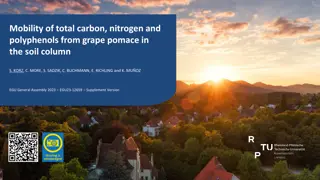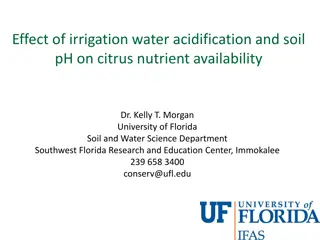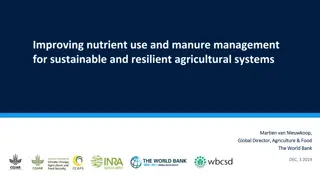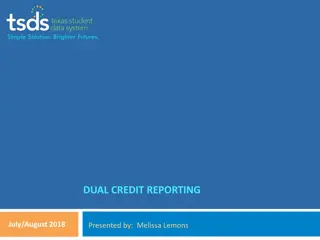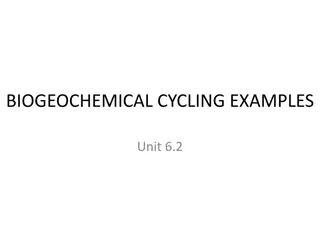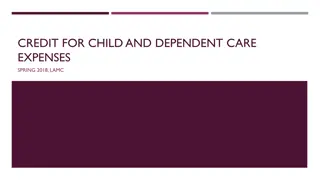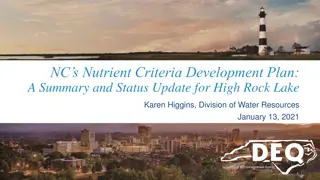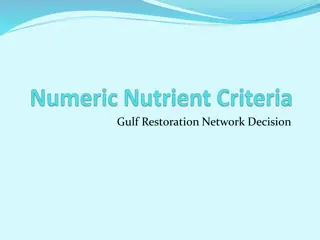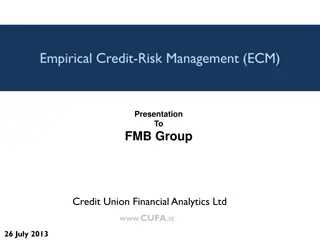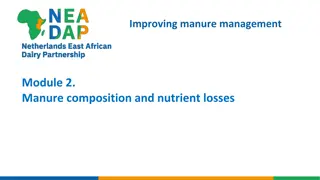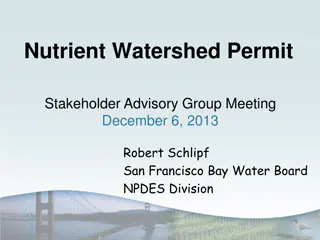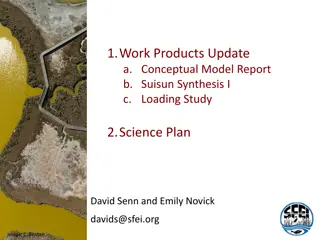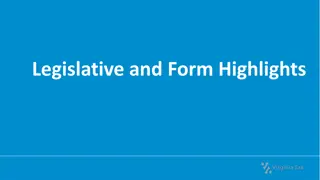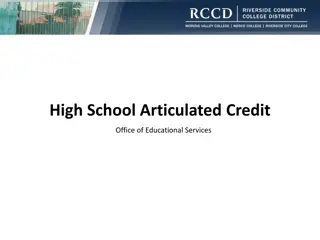Nutrient Credit Practices in Virginia
Nutrient credit practices, including Nutrient Credits, Nutrient Banks, and Nonpoint Source Nutrient Trading, play a vital role in offsetting nutrient loads in Virginia. These practices involve permanent land use changes, stream restoration, and more to reduce nutrient pollution and meet regulatory requirements.
Download Presentation

Please find below an Image/Link to download the presentation.
The content on the website is provided AS IS for your information and personal use only. It may not be sold, licensed, or shared on other websites without obtaining consent from the author.If you encounter any issues during the download, it is possible that the publisher has removed the file from their server.
You are allowed to download the files provided on this website for personal or commercial use, subject to the condition that they are used lawfully. All files are the property of their respective owners.
The content on the website is provided AS IS for your information and personal use only. It may not be sold, licensed, or shared on other websites without obtaining consent from the author.
E N D
Presentation Transcript
Joint Committee Retreat Senate Agriculture, Conservation and Natural Resources House Agriculture, Chesapeake and Natural Resources Melanie D. Davenport Director, Water Permitting Division Virginia Department of Environmental Quality October 4, 2022
What is a Nutrient Credit A permanent practice that reduces nutrient load Utilized to offset increased nutrient loads from new development Compliance option to meet Virginia s post construction stormwater quality requirement 3
What is a Nutrient Bank Free market business VA Code and DEQ regulations set the rules Involves purchase or lease of land Land conversion convert land use from agricultural (crop, pasture, hay) to permanent forest Stream restoration These permanent land use changes result in a calculated reduction of nutrient load Which result in saleable nutrient credits 4
Nonpoint Source Nutrient Trading 271 Total Nutrient Banks oTotal P credits approved 17,313 pounds of P Credits. 255 ag land conversion banks oGenerated 14,551 lbs P Credits on 16,463 acres oUSDA reports 7.8 million acres of farmland in Virginia (2019) 8 golf course conversions 6 stream restorations 2 oyster projects (term credits) 1 BMP 5
Ag Land Conversion Banks by County County Accomack Amelia Appomattox Augusta Bath Bedford Brunswick Buckingham Campbell Caroline Charles City Charlotte Chesapeake Chesterfield Clarke Culpeper Cumberland Dinwiddie Essex # Banks 2 11 8 9 1 1 1 11 4 2 1 8 1 1 8 3 8 1 1 Acres 45 701 699 458 28 64 21 1025 185 137 25 408 59 160 1086 256 419 23 35 County Fauquier Floyd Franklin Franklin City Frederick Giles Gloucester Goochland Grayson Halifax Hanover Henrico Highland Isle of Wight James City King & Queen King George King William Loudoun # Banks 14 2 2 1 1 1 1 3 1 7 2 5 1 4 1 6 1 3 9 Acres 1652 152 106 81 118 163 50 266 19 483 123 189 40 282 16 216 117 164 633 County Louisa Lunenburg Madison Middlesex Montgomery Nelson New Kent Northampton Northumberland Nottoway Orange Page Pittsylvania Powhatan Prince Edward Prince George Prince William Pulaski Richmond # Banks 1 3 1 1 2 3 3 1 5 1 2 1 7 2 16 1 1 1 2 Acres 89 70 26 288 114 221 206 28 267 18 171 43 415 79 807 137 83 76 48 County Rockbridge Rockingham Scott Shenandoah Smyth Southampton Suffolk Surry Sussex Tazwell Virginia Beach Washington Westmoreland Wise Wythe # Banks 2 6 2 3 2 1 8 3 1 1 1 3 18 1 2 Acres 69 375 47 152 57 43 329 170 21 48 27 79 1065 13 77
Consensus Items from Workgroup Any legislation addressing land conversion for nutrient credit generation should be limited to agricultural to forest land conversion. Forest land conversion does not include stream restoration projects and associated buffers. (Fully Support 14, Partially Support 6, Oppose 0) Restricting the conversion of prime agricultural soil lands to forest for the purpose of generating nutrient credits could: reduce supply and increase the price of nutrient credits, allow for the preservation of land with prime soils for non-silviculture agricultural use, and the impacts cannot be quantified until a prime agricultural soils map is created per HB 894. (Fully Support 19, Partially Support 2, Oppose 0)
QUESTIONS Melanie D. Davenport Email: melanie.davenport@deq.virginia.gov Phone: 804-698-4038 10


